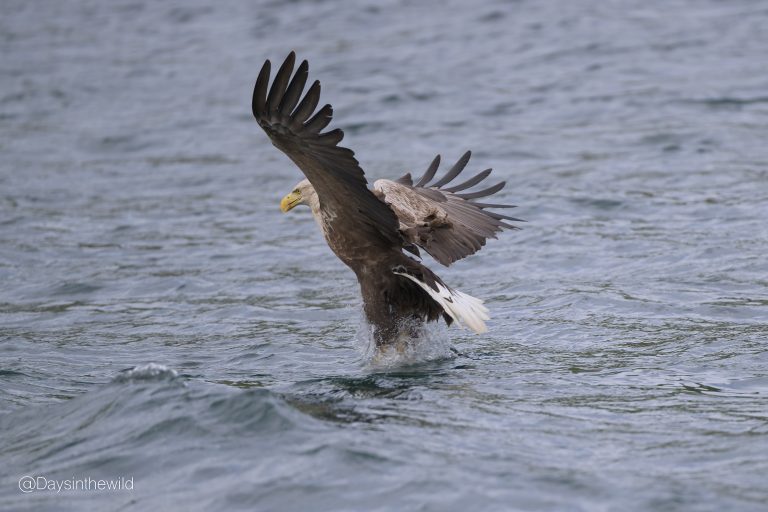The aurora borealis is one of the most stunning sights in nature. To witness the dancing green into pink and red take up the Northern night sky is a real privilege. The lights are charged particles from the sun hitting the Earth’s magnetic field, which is strongest at the poles and why they are increasingly visible the further North you go. People often think that you need to be as far North as Iceland, but the lights are often seen in Scotland and the main difference between Iceland and around Oban upwards is how far overhead the lights reach. All of the Highlands give you a good chance of having around 25 degrees from the horizon of Northern lights, often with good colour intensity, but bring a good camera and it will be even better.
Where and when?
If you are North of Edinburgh and Glasgow, you have a better chance, though the Highlands generally will be the best area. What you will need to raise your chances is a dark sky. This means you need to be nowhere near a city and preferably well away from a town. The West and far North generally have less light pollution.
The lunar cycle also has a big influence on when you can see aurora. When the moon is larger and in the sky, your chances of seeing aurora are severely diminished unless activity is very strong. If you check here: https://moonphases.co.uk/moon-calendar you will find the phases of the moon and when the moon rises and sets. If it has set when it’s dark, it won’t be a problem. Equally the week or so around a new moon will find it too weak to have a significant influence on what you will see.
In the Summer months, you need a big enough gap between sunset and moonrise to see something. For example, 9th April 2023 has a sunset time of 20:09 (later further North), so proper darkness around 21:00 and a moonrise of 23:20, so you have around 2 hours of darkness before the moonlight will wash out the aurora for you (doesn’t mean it isn’t there, you just won’t be able to see it).
The really good news for those visiting Scotland over the next few years is that the Sun has an 11 year cycle of activity which reaches its peak in 2025, so 2023-25 is predicted to have very high activity, so your chances are decent.
The science
For those that are interested in the physics, here’s the nerdy part. Solar storms cause activity on the surface of the sun, with the most common source of aurora being coronal mass ejections. These are massive explosions on the surface of the sun that release billions of tons of hot plasma travelling at around two million miles per hour. When the clouds of material reach earth, the particles interact with Earth’s magnetic field to form a geomagnetic storm.
The actual lights are charged particles (electrons and protons) travelling the millions of miles from the sun and colliding with the Earth’s atmosphere. Most of the particles are deflected away, but some are trapped by the Earth’s magnetic field and accelerate down towards where it is strongest (hence concentrating at the poles). The particles from the sun then hit atoms and molecules in the atmosphere and heat them up, making them glow.
There will be billions and billions of particles in an aurora and all of those reactions happening are why we see the waves of light, the tiny particles being drawn to the lines of force from the Earth’s magnetic field.
The two dominant gasses in the atmosphere are nitrogen and oxygen with the oxygen causing the green colour and purples, blues and pinks from the nitrogen. Reds are caused by very high altitude oxygen interacting with the solar particles and only happens when the aurora is very energetic.
A coronal mass ejection isn’t the only factor in seeing aurora and the IMF is also important. IMF is the Interplanetary Magnetic Field (also called the Heliospheric Magnetic Field) and helps you to predict what will happen to a substorm. It is the part of the solar magnetic field that is pulled out of a solar corona by the solar wind to then fill the solar system. It only affects us if it is in our direction.
Using your camera
You can general capture the Northern lights with most modern mobile phones using a night shooting mode. Android based phones largely have an astrophotography mode that needs the phone to be on a tripod to access it. This will take a 3-4 minute exposure
If you have a ‘proper’ camera, you want to set your F stop (aperture) as wide as you can. F2.8 is great, but generally you want to be able to let in as much light as you can. ISO needs to be fairly high, so somewhere between 2000-6400 usually gets the best results. It’s worth experimenting, but start at 6400 and reduce if you need to. Shutter speed depends on the strength of the lights. A faint glow will need a 20-30 second exposure, whereas a bright and energetic show can need you to speed the exposure up to as little as a second to get some definition.
The bright nights are why photographers will ‘stack’ shots. You take a bright shot (30s) for the foreground and then faster, darker shots for the lights themselves and then it’s all about stacking your images with an image stacker or Photoshop masks. If you ever see the lights bright and dancing around with a bright foreground, it will be multiple images (like a shot of the milky way with purples, reds and blues in it – they are all added in post).


